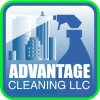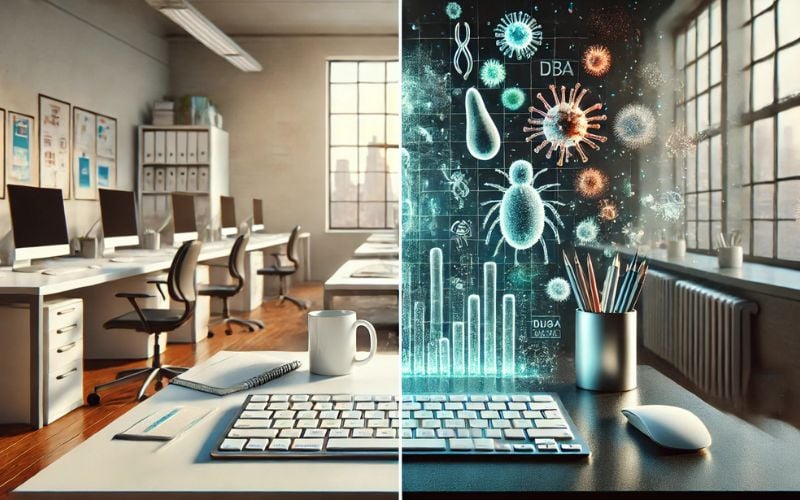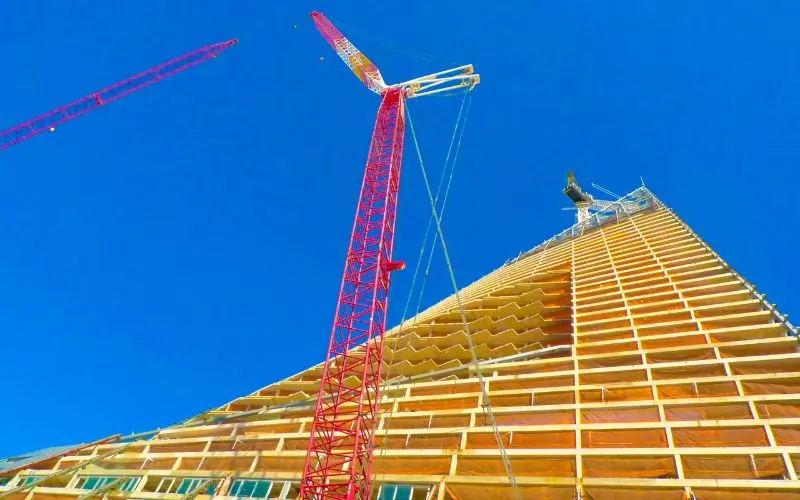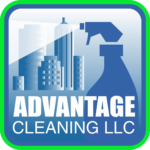Walk into any office building, school, healthcare clinic, or public venue in New York City and you’ll likely see a tidy lobby, a trash bin that’s not overflowing, and a restroom that “looks clean.” But surface-level impressions are not the same as sanitary, compliant, and safe. Beneath what appears to be clean is often a buildup of bacteria, dust, mold, and airborne contaminants that affect public health and expose businesses to serious risks.
It’s easy to underestimate the role of cleaning—until the costs of poor cleaning show up in the form of employee sick days, customer complaints, health department violations, or even legal action. In this city of over 8 million people, with tens of thousands of public-facing and high-traffic facilities, we need to be clear: cleanliness is a public health issue, and bad cleaning is a liability.
This article breaks down exactly what’s at stake, who’s responsible for setting the rules, where the risks hide, and what real commercial cleaning should look like in practice—not just on paper.
Who Sets the Standards and Monitors Compliance?
Commercial cleaning isn’t just about wiping down surfaces or taking out the trash. It’s about meeting regulatory standards that keep people safe and facilities compliant.
Several agencies govern cleaning and sanitation standards across New York City:
OSHA (Occupational Safety and Health Administration)
OSHA enforces federal workplace cleanliness and sanitation regulations under 29 CFR 1910. Their rules apply to office buildings, warehouses, healthcare clinics, and industrial environments, requiring employers to maintain clean, sanitary, and hazard-free workplaces.
CDC (Centers for Disease Control and Prevention)
The CDC sets the gold standard for disinfection and hygiene, especially in schools and healthcare. Their K–12 operational strategy and healthcare cleaning guides are widely referenced by facilities nationwide.
NYC Department of Health and Mental Hygiene (DOHMH)
The DOHMH enforces NYC Health Code Article 81, which governs cleanliness in food areas, restrooms, and public facilities like tourist attractions and entertainment venues.
NYC Department of Education (DOE)
DOE facilities follow strict custodial schedules and sanitation protocols for public schools, available via NYC Facilities Services, aligning with CDC standards and requiring compliance checks.
EPA (Environmental Protection Agency)
EPA regulations determine what products can legally be used for disinfection in commercial and institutional spaces. Facilities must use EPA-registered disinfectants—especially when combating specific pathogens like COVID-19 or norovirus.
Bottom Line:
Every commercial facility in NYC is subject to oversight. If your commercial cleaning provider doesn’t know these regulations—or ignores them—you’re already exposed.
Where the Risks Are—and Who’s at Stake
Let’s break down where cleaning failures create the biggest impact—and who suffers when standards aren’t met.
Office Buildings & Corporate Campuses
Shared desks, communal kitchens, restrooms, elevator buttons, HVAC systems—these are all breeding grounds for germs. Even law offices or executive suites aren’t immune. One infected person in a poorly cleaned space can sideline an entire department within days.
Risks:
- Illness transmission via high-touch surfaces
- Allergens from dust and mold
- Complaints from staff and clients
- OSHA violations for unsanitary conditions
Schools & Educational Facilities
Hundreds of students, teachers, and staff cycle through classrooms, gyms, and cafeterias daily. Improper cleaning can lead to norovirus outbreaks, flu transmission, and asthma triggers.
Risks:
- Child illness and parental backlash
- DOE inspections and shutdowns
- Higher absentee rates and health costs
Tourist Attractions & Public Venues
Attractions in Manhattan, parks in The Bronx, and venues in Brooklyn see thousands of visitors per day. A single contaminated bathroom or food stall can create public health fallout overnight.
Risks:
- Foodborne illness outbreaks
- Sanitation fines and health code violations
- Damage to brand and tourism revenue
Industrial Facilities & Warehouses
Grease, chemical residue, airborne particles, and high foot traffic are constant in industrial zones. Without scheduled deep cleaning, contamination and injury risks spike quickly.
Risks:
- Respiratory health issues from dust
- Workplace injuries due to slippery or obstructed floors
- OSHA violations and production slowdowns
Healthcare Clinics
Unlike general office spaces, clinics deal with bloodborne pathogens, airborne viruses, and immunocompromised patients. Cleaning here isn’t optional—it’s a clinical requirement.
Risks:
- Cross-contamination between patients
- Failure to meet infection control standards
- Loss of accreditation, legal liability, or license suspension
Takeaway: Clean Isn’t Optional—It’s an Intentionally Measurable, Managed Standard That is Constantly Improved
If your commercial cleaning provider can’t tell you what they clean, how they do it, how they measure quality, and what standards they follow, they’re not protecting your space—they’re putting it at risk.
In NYC’s dense, high-traffic environments, surface-level “clean” isn’t enough. Quality commercial cleaning is intentional, structured, verified, and compliance-driven. It protects people, maintains reputations, and keeps businesses running.
Whether you manage an office in Manhattan, a warehouse in the Bronx, a clinic in Queens, or a school in Brooklyn—don’t settle for “clean enough.” Demand better. Ask for proof. Because in this city, cutting corners can cost everything.
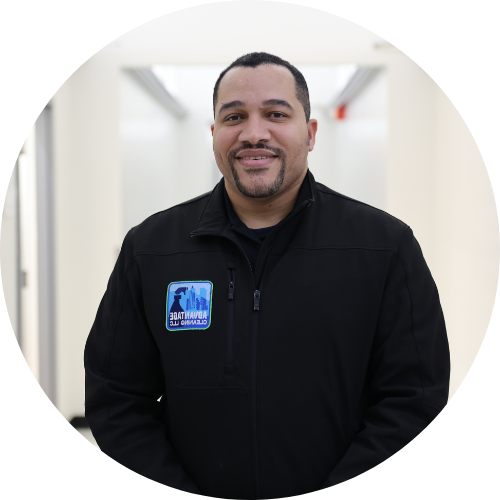
A higher grade of Quality in Commercial Cleaning
Commercial Cleaning in CONNECTICUT
What Quality Commercial Cleaning Looks Like
At Advantage Cleaning, quality isn’t a buzzword—it’s a system. It’s how we define success, measure performance, and train every crew member and supervisor in what commercial cleaning excellence looks like in practice.
Here’s what true quality commercial cleaning requires, and how we make it real in every facility we service across NYC:
1. A Defined Quality Standard for Each Facility Type
Quality is not subjective—it’s set. Office buildings, clinics, schools, warehouses, and public venues all have different regulatory standards and risk profiles. Advantage Cleaning establishes a Scope of Work (SOW) and Quality Benchmark Plan for each client site, which includes:
- Required cleaning frequencies (daily, weekly, monthly)
- Specific surfaces, zones, and equipment to be cleaned
- Disinfection protocols for high-touch areas
- Materials, tools, and products to be used (EPA-approved where applicable)
- Compliance alignment (OSHA, CDC, DOHMH, DOE)
No guessing. No gray areas. Everyone knows what “done right” looks like.
2. Quality Control That’s Built Into Operations
We don’t wait for clients to notice something’s off—we inspect before they have to. Our quality control processincludes:
- Routine Supervisor Inspections using standardized checklists
- Digital Cleaning Logs signed off by crew leads and cross-checked by site supervisors
- Scheduled Quality Audits reviewed with client facility managers monthly or quarterly
- Immediate Corrective Action Protocols when deficiencies are found
This isn’t “spot-checking”—this is a system of accountability that holds itself to the highest standard.
3. Training That Instills a Culture of Quality
You don’t get quality outcomes from untrained people. That’s why every team member is trained not just in how to clean, but why it matters.
- Crew members are trained on industry-specific risks and compliance standards
- Supervisors go through leadership training on quality enforcement, site management, and client communication
- New hires are shadowed and reviewed for 30+ days before being cleared to lead solo shifts
Quality isn’t just a checklist—it’s culture. We teach it, reinforce it, and expect it at every level.
4. Supervisors Who Own the Outcome
The backbone of our quality system is our on-site supervisors. These are not clipboard carriers—they are former cleaners, crew leads, and site managers who have risen through the ranks by proving their ability to deliver excellence.
Our supervisors:
- Know the scope of work inside out
- Coach crews in real time, with a hands-on leadership style
- Conduct routine walkthroughs with clients and adjust service as needed
- Use data from inspections and logs to proactively improve performance
They don’t just supervise—they take ownership. They are trained to lead with precision and held accountable to measurable results.
5. How To Measure Quality
Here’s how you know it’s working—and how we know it’s working:
- Cleanliness Scores (from inspection checklists and client feedback)
- Incident Reports (how often corrective action is required)
- Compliance Tracking (alignment with site-specific standards)
- Client Satisfaction Reviews (monthly or quarterly meetings)
- Retention & Rework Metrics (how often we get it right the first time)
If any of these trend downward, we adjust. Fast. Because quality is not just delivered—it’s managed.
Final Word: Don’t Just Hope for Clean. Demand Proof.
If your cleaning company can’t show you exactly how they ensure quality, they’re not. If they can’t explain their training, measurement, and supervision structure—they’re winging it. And in NYC’s regulatory, high-traffic environments, winging it leads to compliance failures, health risks, and business interruptions.
Quality cleaning is structured, scheduled, measured, and led.
At Advantage Cleaning, it’s what we build every service around.
FAQs
Worth reading
High-Rise Post-Construction Cleaning: Compliance, Coordination, and Cleaning High Rises
When you’re turning over a high-rise project in Manhattan, the final cleaning phase isn’t just…
Challenges Facing Commercial Construction Clean Up & How To Ensure Higher Quality
As a construction project manager, you already juggle an overwhelming number of tasks — from schedules…
